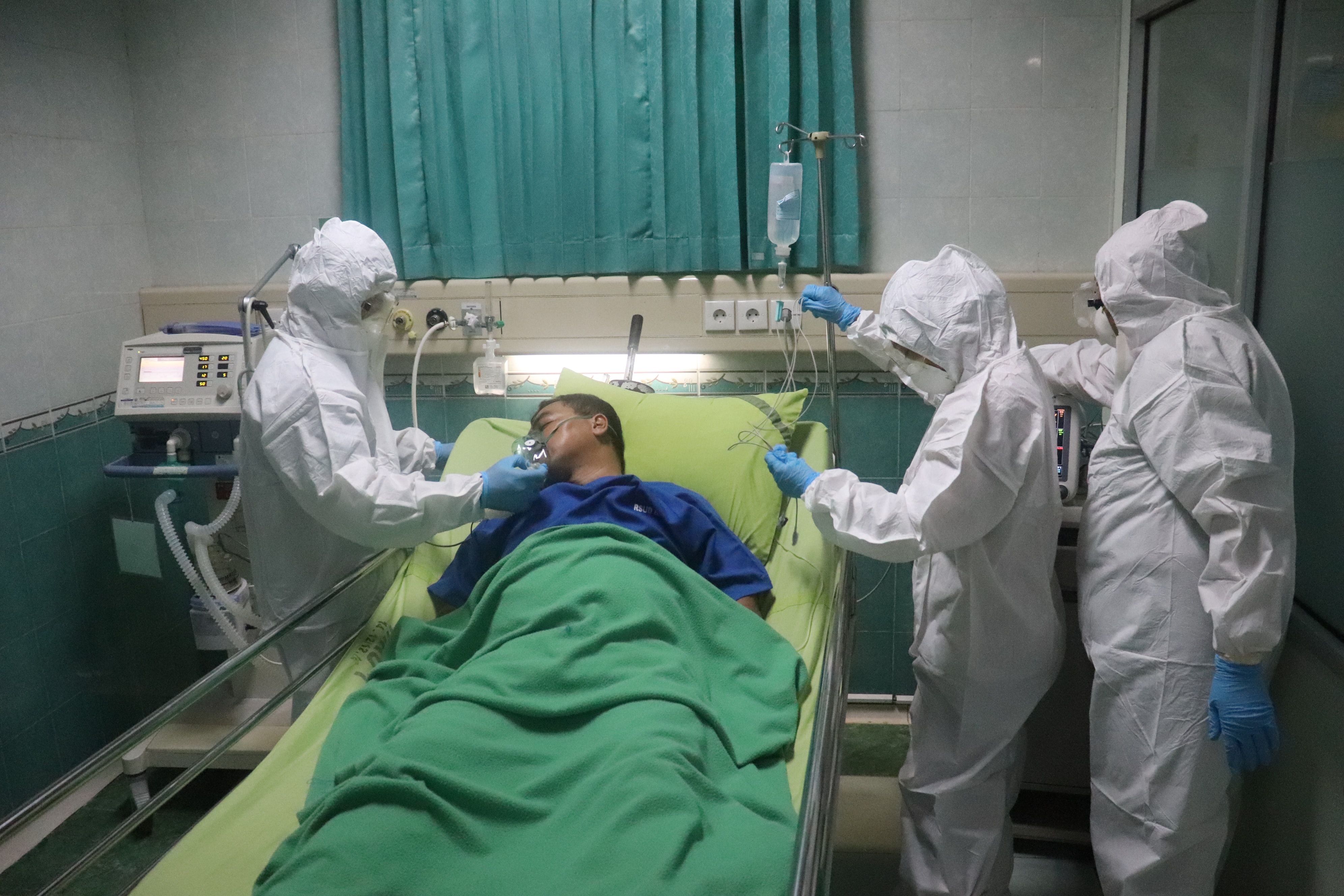High-Flow Oxygen Reduces Need for Mechanical Ventilation in Severe COVID-19
Patients with severe COVID-19 who received high-flow oxygen therapy were less likely to need mechanical ventilation and had a shorter time to clinical recovery, investigators in Colombia found.

High-flow oxygen therapy reduced the need for mechanical ventilation and shortened the time to clinical recovery among patients with severe COVID-19, a new study in Colombia found.
The randomized, open-label, multicenter clinical trial, published in JAMA, included 199 patients hospitalized with severe COVID-19 at three hospitals in Colombia between Aug. 13, 2020, and Jan. 12, 2021. Patients were randomized into two groups, receiving either high-flow oxygen therapy through a nasal cannula or conventional oxygen therapy.
“Among patients with severe COVID-19, use of high-flow oxygen through a nasal cannula significantly decreased need for mechanical ventilation support and time to clinical recovery compared with conventional low-flow oxygen therapy,” the study authors, led by Gustavo A. Ospina-Tascón, MD, PhD, Department of Intensive Care, Fundación Valle del Lili, wrote.
Intubation occurred in 34.3% of 99 patients in the high-flow oxygen group compared with 51% of 100 who received conventional oxygen therapy (hazard ratio, 0.62; 95% CI, 0.39-0.96; P = .03). Median time to clinical recovery within 28 days also was shorter among patients who received high-flow oxygen therapy at s 11 days (interquartile range, 9-14) compared with 14 days (IQR, 11-19) among those in the conventional therapy group (HR, 1.39; 95% CI, 1.00-1.92; P = .047). Clinical recovery occurred in 77.8% of patients in the high-flow oxygen therapy group compared with 71% of those in the conventional therapy group.
Arterial hypoxemia is a primary feature of severe COVID-19, the study authors noted. Oxygen supplementation is used to manage hypoxemic respiratory failure. The study didn’t use an oxygen escalation strategy but rather provided high-flow oxygen therapy in the early stages of respiratory failure, within 30 minutes after randomization.
“Avoiding systematic intubation in COVID-19 could prevent complications related to invasive mechanical ventilation, sedation, delirium and neuromuscular paralysis,” the study authors wrote. “In addition, successful prevention of intubation could optimize resources during pandemic conditions.”
Patients enrolled in the study were adults age 18 or older admitted to the emergency department, general ward or intensive care unit with suspected or confirmed SARS-CoV-2 infection, acute respiratory failure and clinical signs of respiratory distress. The media age of participants was 60 and 32.7% were women.
Those in the high-flow oxygen therapy group were treated with heated and humidified gas at an initial flow of 60 L/min and an F102 of 1.0 continuously applied until intubation or improvement in clinical signs and respiratory distress.
Secondary outcomes included median ventilator-free days within the first 28 days after randomization, which was 28 in the high-flow oxygen therapy group compared with 24 in the conventional therapy group (adjusted odds ratio, 0.77; 95% CI, 0.33-1.68; P = .01). Need for kidney transplant therapy, in-hospital and intensive care unit length of stay, and proportion of adverse events were not significantly different between the two groups.
Strengths of the study include consistently maintained randomization and well-defined protocol. Results are consistent with studies of acute hypoxemic respiratory failure due to other etiologies.
Limitations include that the study wasn’t blinded, that it was a relatively small sample size from only three hospitals, it wasn’t powered to demonstrate differences in mortality, and it evaluated only clinical outcomes without measurements of transpulmonary pressures, minute volume and nonhomogeneous distribution of tidal ventilation.
